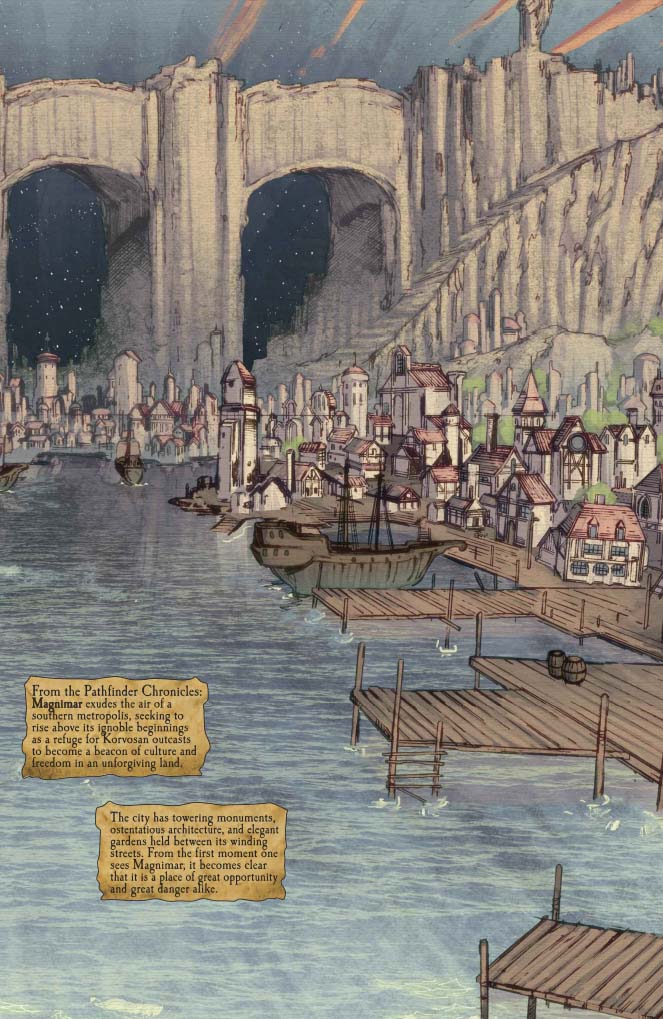

Die Vecna Die! set up the transition between the second and third editions of D&D. In this adventure, Vecna was given the rank of a lesser god. In 2000, Wizards of the Coast released the last adventure to be written for the 2nd edition ruleset, Die Vecna Die!, a three-part adventure tying Greyhawk to the Ravenloft and Planescape campaign settings. However, it wasn't until 1998 that there was a Ravenloft-centered follow-through, Vecna Reborn. After the publication of Vecna Lives! (1990), "Vecna disappeared throughout the rest of the '90s, until Domains of Dread (1997)" which confirmed his new location in the realm of Ravenloft. Vecna's history, via his artifacts, was also further developed in the supplemental sourcebook Book of Artifacts (1993). At the end of the adventure-presuming the players defeat Vecna-he is transported to the Ravenloft campaign setting. With the release of the adventure Vecna Lives! in 1990, written in support of The City of Greyhawk boxed set, Vecna finally appeared in person, reimagined as a demigod, and the chief antagonist of the adventure. Ten years later, in Advanced Dungeons & Dragons 2nd edition's Dungeon Master's Guide (1989), Vecna's history was expanded under the description of his Hand. During the Advanced Dungeons & Dragons years, Vecna was regarded only as a legend or myth, a long-destroyed legendary lich of great power, only able to threaten player characters who dared to use his Hand and Eye. The Hand and Eye of Vecna were then mentioned in the first edition Dungeon Master's Guide (1979) on page 124. On the artifacts, Gary Gygax later said, "nary a detail of those items did ever reveal to me".
#Pathfinder city of secrets online series
The Hand and Eye of Vecna on the other hand were inspired by similar items that appear in the Eternal Champion series by Michael Moorcock (the Hand of Kwll and the Eye of Rhynn). The name Vecna was an anagram of Vance, the surname of Jack Vance, the fantasy author whose works inspired the magic system used in Dungeons & Dragons. "The book contains no more detail on Vecna other than the fact that Kas was his bodyguard". These were supposedly the only remnants of an evil lich, Vecna, who had been destroyed long ago. In Eldritch Wizardry (1976), the third supplement to the original Dungeons & Dragons rules, Brian Blume invented two artifacts he called the Hand and Eye of Vecna. Publication history Original Dungeons & Dragons Vecna's "right-hand man", who ultimately became his betrayer, is Kas the Bloody-Handed, a vampire whose sword, the Sword of Kas, is also an artifact. Vecna's holy symbol is an eye in the palm of a left hand. Even after the character achieved godhood -being a member of the third edition's default pantheon of D&D gods (the pantheon of Oerth) -he is still described as missing both his left eye and left hand. He was eventually destroyed, and his left hand and left eye were the only parts of his body to survive. Originally appearing in the Greyhawk campaign setting, Vecna was described as a powerful wizard who became a lich. Vecna has been named one of the greatest villains in the Dungeons & Dragons franchise. n ɑː/ VEK-nah ) is a fictional character appearing in the Dungeons & Dragons fantasy role-playing game. The Arch-Lich, the Chained God, the Maimed God, Master of the Spider Throne, the Whispered One, the Dying King, the Lord of the Rotted Tower, the Undying Kingĭestructive and Evil Secrets, Magic, Hidden Knowledge, Intrigue Pathfinder: City of Secrets comic books shown are in stock.As portrayed in the 3rd Edition sourcebook Deities and Demigods. Near Mint + Near Mint - Very Fine Fine Very Good Good The dangers and opportunities of the big city could bring the adventurers closer together-or tear them apart! As the wizard Ezren seeks an audience with the Pathfinder Society, his allies explore the city's ancient magic, and deep political divides. The Pathfinder heroes head to Magnimar, and danger isn't far behind.


 0 kommentar(er)
0 kommentar(er)
